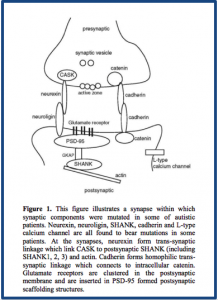With a rising frequency of affected individuals and increasing visibility in society, diving into the current knowledge of how autism affects the brain is important to inform us on how individuals with ASD’s (Autism Spectrum Disorders) experience the world from a different perspective. The following topics are of interest when considering autism’s cause and how the symptoms play out for individuals at any point on the spectrum. One of the most impactful and studied components of autism is the neuronal function/dysfunction that occurs in individuals with ASD’s.
Neural Connectivity and development:
In brains with autism, dysfunctional neural connectivity plays a large role in the manifestation of common symptoms seen in individuals with ASDs. Neurons are vital in passing chemical information from areas of the body to different areas of the brain. In brains of individuals with autism, these conversations between neurons are affected by an increased number of neurons and a lack of good communication between individual neurons. This concept can be understood by thinking about a 10-way phone conversation. With all ten individuals talking at once, it is impossible to pick out important bits of information and communicate the correct message to all the individuals! This is similar to the type of dysfunction seen in the neurons of brains with autism.

Another common developmental abnormality in brains with ASDs is the improper migration of neurons. This migration occurs before being born, and helps to place neurons where they need to be to function properly and align with each other. This has been connected to genetic mutations in the Reelin (RELN) gene that plays a huge role in the proper migration of neurons.
Genetic Mutations Contributing to Synaptic Malformation
In nervous system, synapses are the gaps located between neurons which neurotransmitters and other molecules travel across to transmit signals to the next neuron in line. This process is vital to the proper communication between neurons, and outcomes in the cells. In individuals with ASDs, a common trait seen is malformed synapses between neurons. These malformations cause signaling, which is already at an increased level, to be inaccurate at transferring chemical information.

There are a few genetic mutations studied that play a role in the malformation of synapses in brains with ASD’s. This class of mutations has to do with the formation of Neurexin and Neuroligin, trans-membrane proteins tasked with physically docking the pre-synaptic (sending) neuron with the post-synaptic (receiving) neuron. Mutations causing deletions or mutated versions of these proteins negatively affect the ability of signals to reach the receiving neuron correctly.
These abnormalities play one piece in the puzzle of ASD’s, but is an important one to understand symptoms manifested in individuals with autism. Individuals with autism have symptoms related to complex malfunctions in the nervous system, immune system, and environmental stimuli that combine to create the experience of life with an autism spectrum disorder.